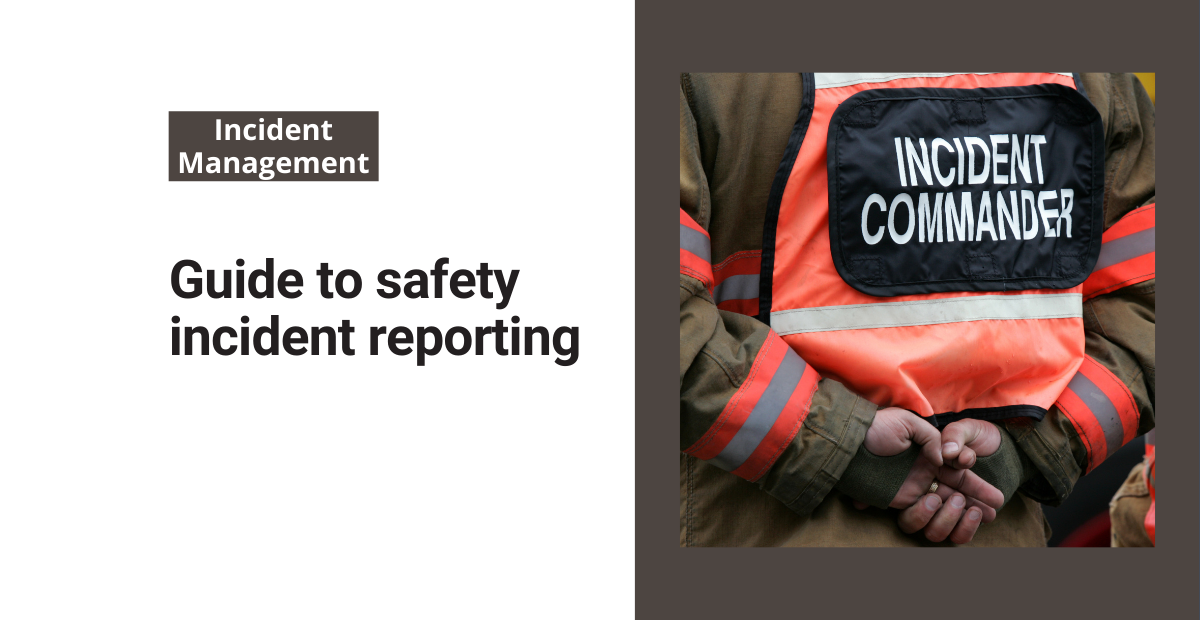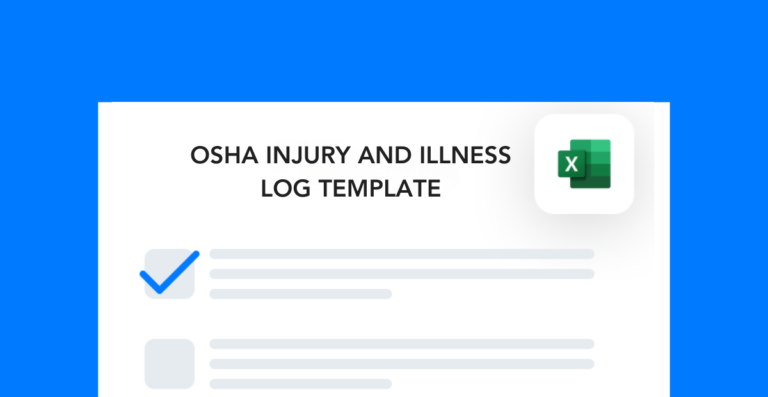Over the past 50 years, work-related injury and illness rates have declined dramatically in the United States. Improvements in equipment and PPE have contributed to this decline. But so have OSHA’s incident reporting requirements.
The goal of safety incident reporting is to document, analyze, and address workplace incidents. Without this documentation, it is difficult to track the effectiveness of safety measures over time.
Although incident reports are required by OSHA, they hold significant internal value as well. Start by ensuring that your reporting follows OSHA guidelines. Then, use the information you’ve documented to make lasting safety improvements over time.
OSHA incident reporting guidelines
In many industries, OSHA requires incident reports for businesses with ten or more employees. This includes industries like:
- Mining
- Manufacturing
- Construction
- Oil & Gas
Other types of businesses like florists, schools, and ad agencies are exempt from this type of documentation. OHSA’s reporting guidelines ensure that there is enough data available to make meaningful advancements in nationwide EHS standards.
What is considered an incident?
Only injuries and illnesses that require treatment beyond first aid are considered “recordable” under OSHA requirements. Here is the full definition of a recordable incident, according to OSHA:
A good rule of thumb is to always record an incident if you’re not sure whether you should. The better your documentation, the easier it is to find safety issues in your facility. At the very least, take notes whenever a worker visits the onsite safety office. That way, you can reference the initial notes if the employee comes back.
Timeline for incident reporting
The overall timeline for filing safety reports depends on the nature of the incident. Fatalities and severe injuries must be reported to OSHA within 8 hours of when they happened. This timeline is extended to 24 hours for amputations, eye loss, and in-patient hospitalizations.
When reporting these incidents, you must provide several details:
- Incident description
- Incident location and time
- Contact information (name and phone number)
- Name of injured employee
- Name of business
You must keep all incident documentation for a minimum of five years. If OSHA requests the documentation and you don’t have it, you may receive a citation.
That’s why many facilities are switching to an electronic recordkeeping system. EHS software allows you to record, store, manage, and analyze your incident reports. If you use a paper documentation system, make sure you have copies of all your records. Store them in a safe place and ensure that they’re easy to find and access.
Writing incident reports
The documents that you will need to fill out are OSHA recordkeeping forms 300, 300A, and 301. Forms 300 and 301 include a variety of information:
- Employee name, job title, and case number
- Location of the incident
- Description of the incident
- Aftermath of the incident (days away from work, job transfer, restrictions, etc.)
- Type of injury or illness
These two forms must be updated for each incident. Only form 300A is submitted on an annual basis. It documents the facility’s general incident information, including:
- Number of days that employees are away from work, transferred, or restricted
- Total number of site fatalities and recordable cases
- Number of each kind of injury or illness (poisonings, hearing loss, injuries, skin disorder, respiratory conditions, other)
For each individual incident report, make sure to include as many details as possible. Your reports should be comprehensive enough that anyone from outside of the organization could read them and know exactly what happened.
Tracking action items
After you have gathered the details you need, the next step is to do a root cause analysis. During this process, your goal is to break down the incident into its most basic parts. Oftentimes, your root cause(s) will require several action items. Some will be long-term. Some will be short-term. Regardless of which actions you decide to take, the most important thing is to follow up.
You should document all your action items. Note what you did, when you did it, and what the results were. If a similar incident happens again, you need to reevaluate your previous approach and find a better solution.
OSHA’s recordkeeping requirements ensure that businesses track important incident data. But the benefits of safety incident reporting primarily extend to individual sites. With the right documentation of both incident information and action items, you can take more meaningful action to reduce incident rates in your facility.
Other posts you might like…
No posts

